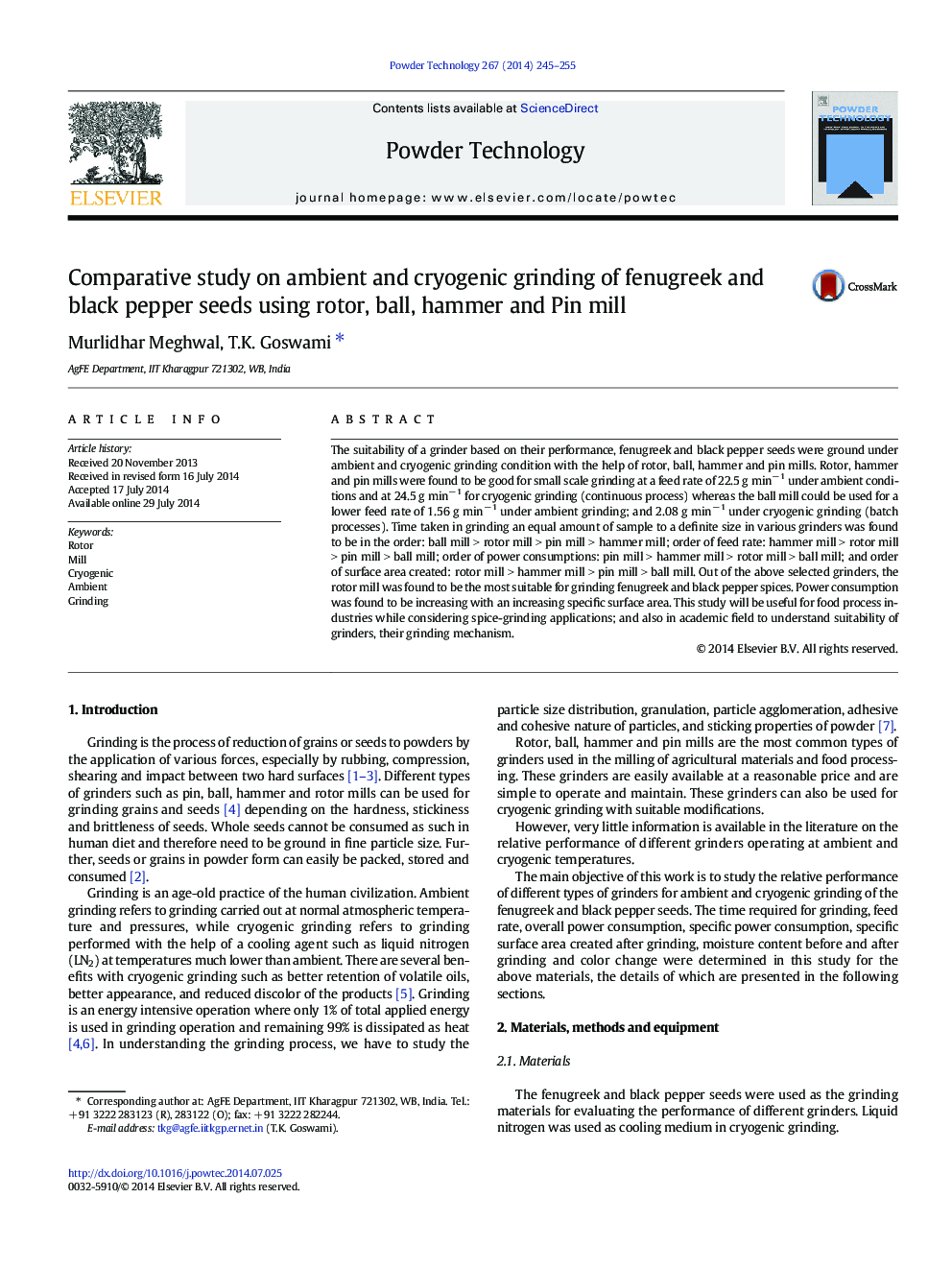| Article ID | Journal | Published Year | Pages | File Type |
|---|---|---|---|---|
| 236018 | Powder Technology | 2014 | 11 Pages |
•Parameters were determined for selection of better grinder for spices grinding.•Highlights the grinding mechanism of Rotor, Hammer, Ball and Pin mills.•Ambient and cryogenic grinding of fenugreek and pepper suggests a suitable grinder.•This comparative evaluation pin point the drawbacks of ambient grinding.
The suitability of a grinder based on their performance, fenugreek and black pepper seeds were ground under ambient and cryogenic grinding condition with the help of rotor, ball, hammer and pin mills. Rotor, hammer and pin mills were found to be good for small scale grinding at a feed rate of 22.5 g min− 1 under ambient conditions and at 24.5 g min− 1 for cryogenic grinding (continuous process) whereas the ball mill could be used for a lower feed rate of 1.56 g min− 1 under ambient grinding; and 2.08 g min− 1 under cryogenic grinding (batch processes). Time taken in grinding an equal amount of sample to a definite size in various grinders was found to be in the order: ball mill > rotor mill > pin mill > hammer mill; order of feed rate: hammer mill > rotor mill > pin mill > ball mill; order of power consumptions: pin mill > hammer mill > rotor mill > ball mill; and order of surface area created: rotor mill > hammer mill > pin mill > ball mill. Out of the above selected grinders, the rotor mill was found to be the most suitable for grinding fenugreek and black pepper spices. Power consumption was found to be increasing with an increasing specific surface area. This study will be useful for food process industries while considering spice-grinding applications; and also in academic field to understand suitability of grinders, their grinding mechanism.
Graphical abstractFigure optionsDownload full-size imageDownload as PowerPoint slide
